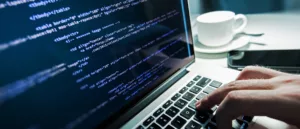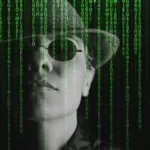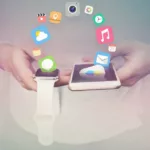Software development includes a wide range of activities, such as assisting businesses in creating, implementing and managing various software, processes, systems, and so on. According to Statista, the IT services spending is expected to grow at a rate of around 5 percent, and the market can reach $1034 billion in 2019. Compare it with 2017 when the same parameter was equal $931 billion.
The software development services market is clearly evolving. To be ready for the next year that brings even more investment we suggest that you learn what trends will dominate next year.
We will examine four of them: advanced testing of IoT devices, the popularity of immersive technologies, smart spaces, and augmented analytics.
1- IoT Testing
The number of connected devices is rising from year to year. The Installed base of the Internet of Things devices is expected to reach around 75 billion items. Compare it to as little as 23 billion items in the 2018 and you will understand the scale of progress.
There is a need to pay more attention to the devices used in IoT systems because of their growing number. The more data they store and share, the more vulnerable your company is to the leakage of business-sensitive data. So there is a need to perform a more advanced testing in order to secure your data.
Often connected devices and systems undergo the following types of testing:
- Compatibility checking;
- Reliability and scalability tests;
- Usability testing;
- User authentication security validation;
- Data integrity validation;
- Network performance testing.
The better the results of testing, the more sustainable and secure your connected devices are. Ensuring their stable performance you secure your business’ data – this is why IoT testing is an important trend of 2019.
2- Augmented Analytics
Augmented analytics, or augmented data discovery, is a relatively new concept. It utilizes machine learning and data science to solve a problem that businesses face – they have data but do not know what does it mean. Pure data is useless while the insights from it really matter.
Augmented analytics allows for gathering insights valuable for businesses automatically. It conducts all the technical actions needed to work with data:
- Collect data
- Clean it and prepare for analysis
- Perform analysis
- Generate insights
Then the insights need to be aligned with the organization problems and plans. When a data scientist does all of the above, it is expensive, time-consuming and not always beneficial at all. These scientists can make mistakes during their repetitive work because of decreased attention to detail. An augmented analytics engine replaces data scientists and does the work faster and more accurately.
3- Smart Spaces
Smart spaces unite humans and technological systems in one environment. The established connection results in a coordinated and intelligent smart space. As time progresses, smart spaces unite more and more innovations such as edge computing and blockchain. In the future, all individual smart devices are expected to be replaced by smart spaces.
Smart spaces are open, connected, intelligent, and interactive environments. The most inclusive example is a smart city where the entire areas dedicated to special matters as business, production, government are built with intelligent frameworks that allow for social collaboration.
4- Immersive technologies
Augmented reality, virtual reality, and mixed reality are now being utilized in healthcare, finance, industrial production, automotive, and many other industries. Businesses apply these technologies to solve various problems, and in the future, there will be even more possibilities.
The next generation of VR, for example, will allow users to sense shapes. This provides a fertile ground for developing solutions that will be more interactive, convincing and conversational: advanced virtual assistants, chatbots, and so on.
The lack of convenience and control are, by the way, two main obstacles that hinder the development and mass adoption of immersive technologies. There are still not so many options to choose from in terms of hardware, and the technology itself has to become more affordable and provide easier control options. These are the challenges for 2019 to solve.
To sum up, the above mentioned trends depict the most demanded aspects of what will dominate the software development services field next year. They still have plenty of room for improvement, but will definitely corner the market.








